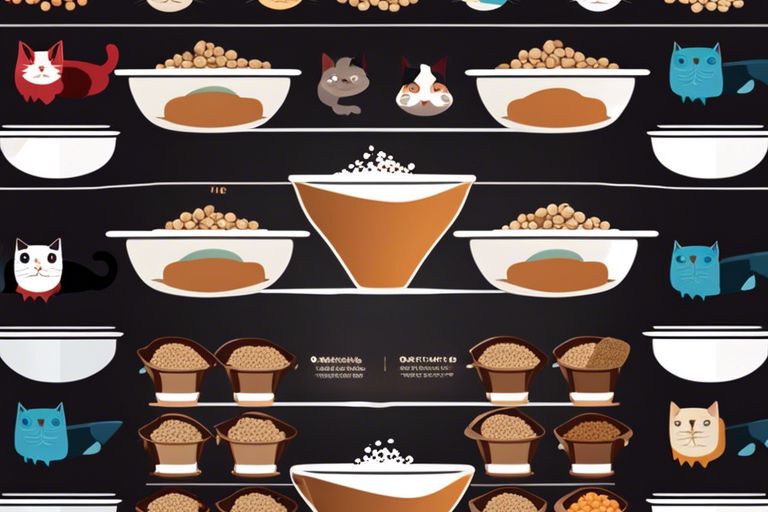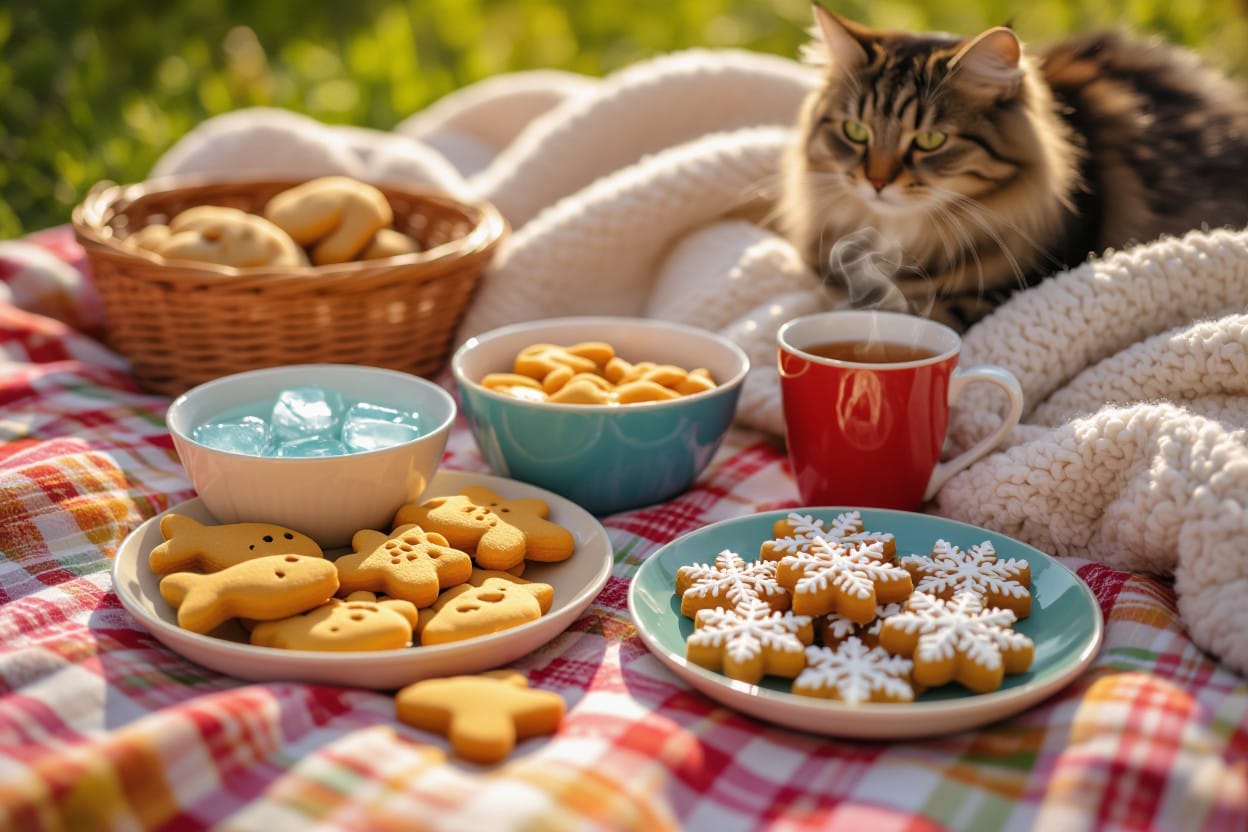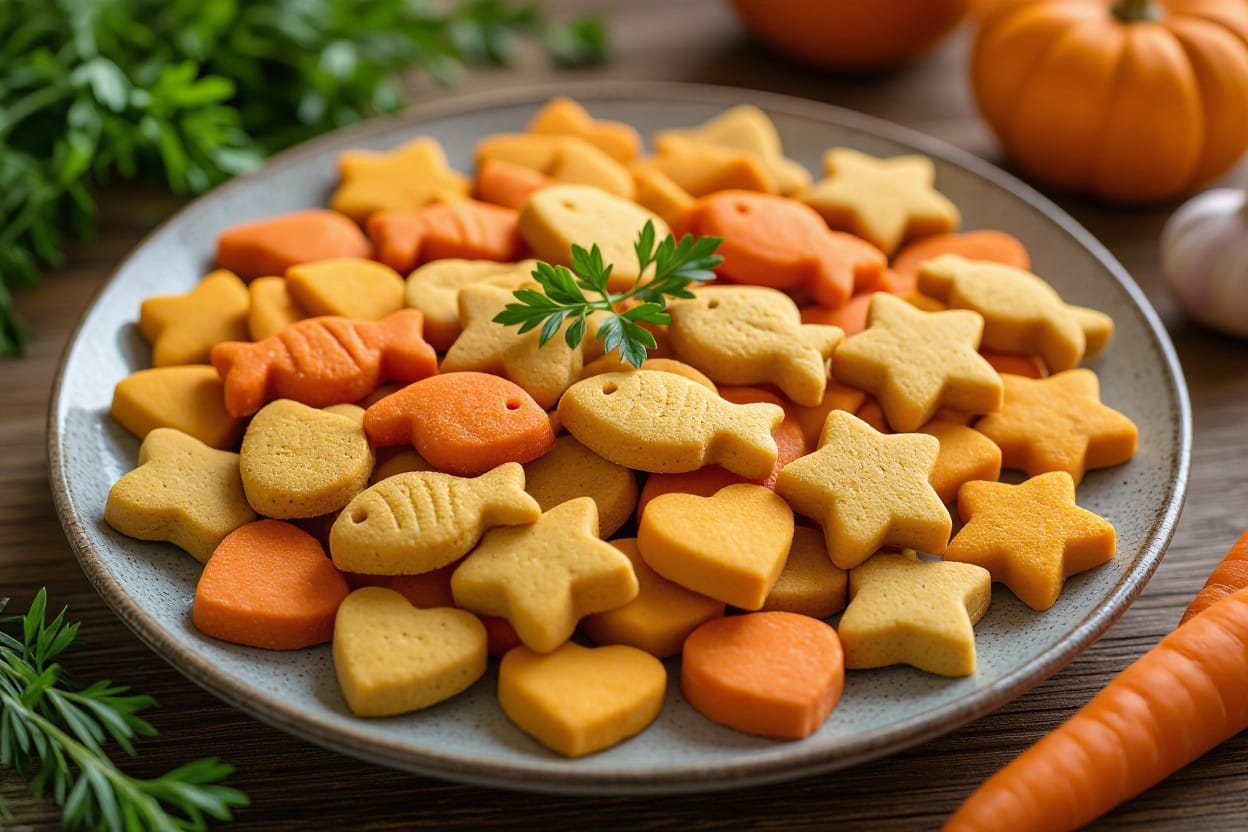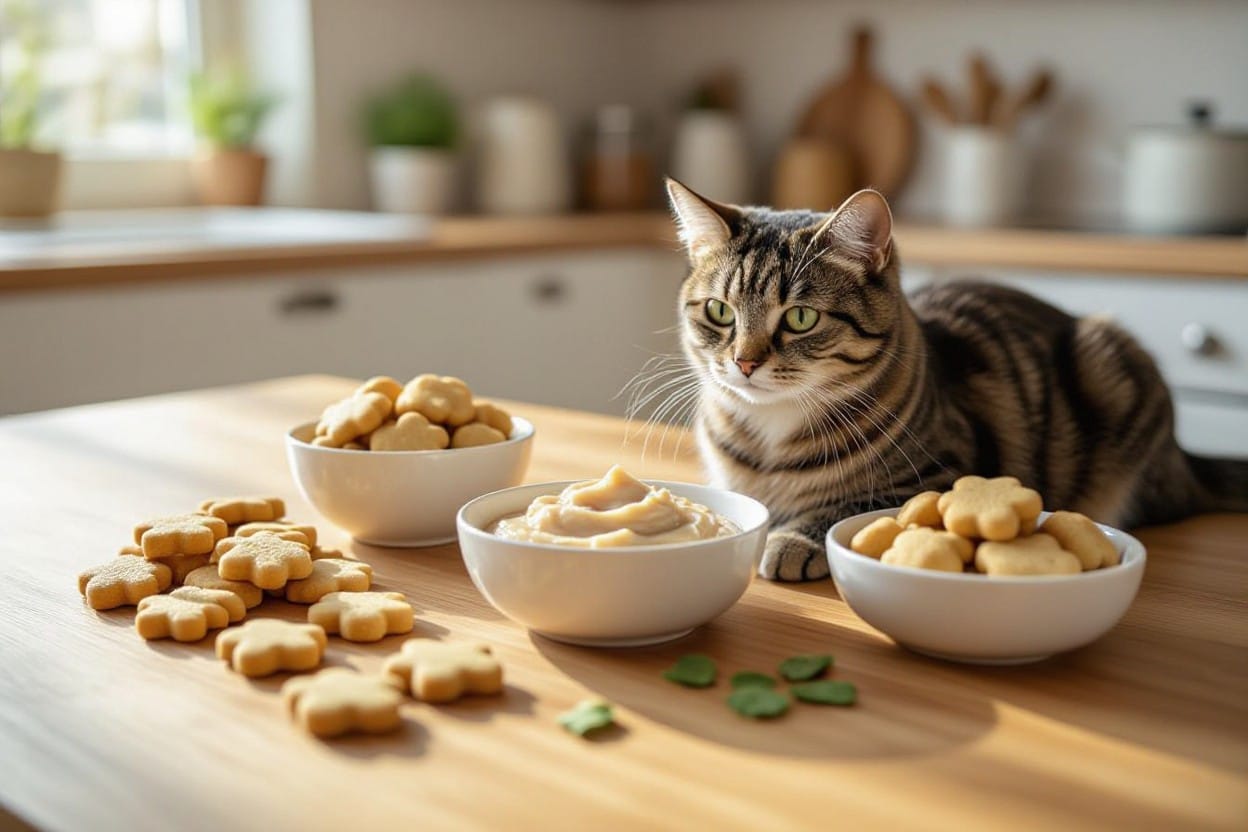It’s necessary to select the best cat food that meets your feline companion’s specific dietary requirements. Cats are obligate carnivores, which means they need a diet rich in animal-based proteins to thrive. Whether you have a kitten, adult cat, or a senior moggy, understanding the nutritional needs of your furry friend is crucial in ensuring their overall health and well-being.
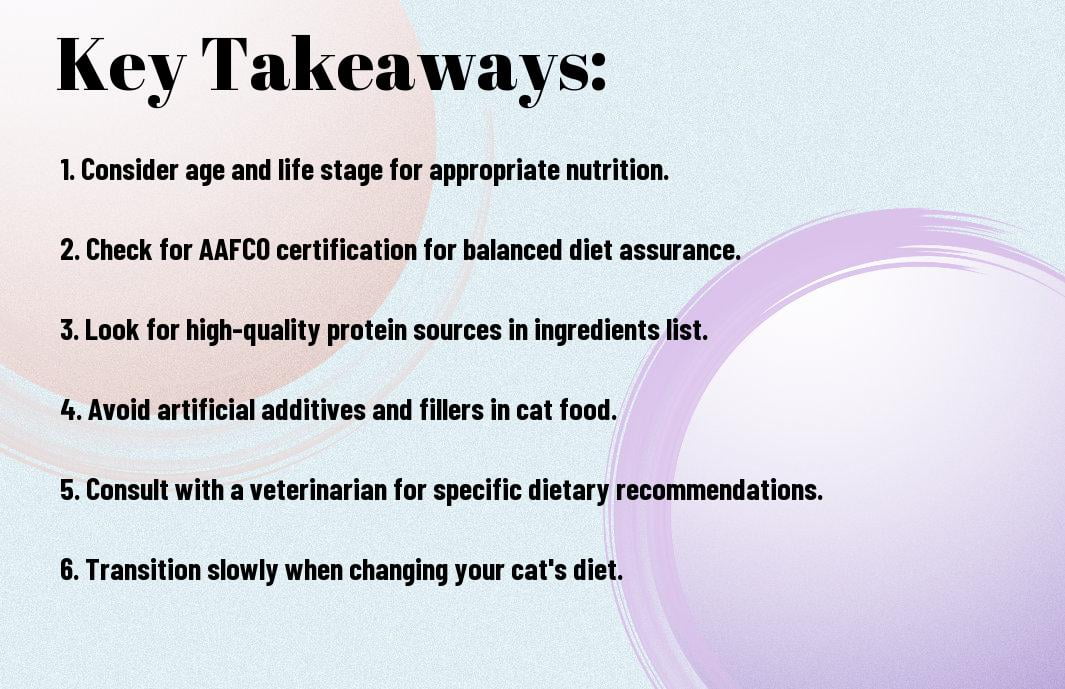
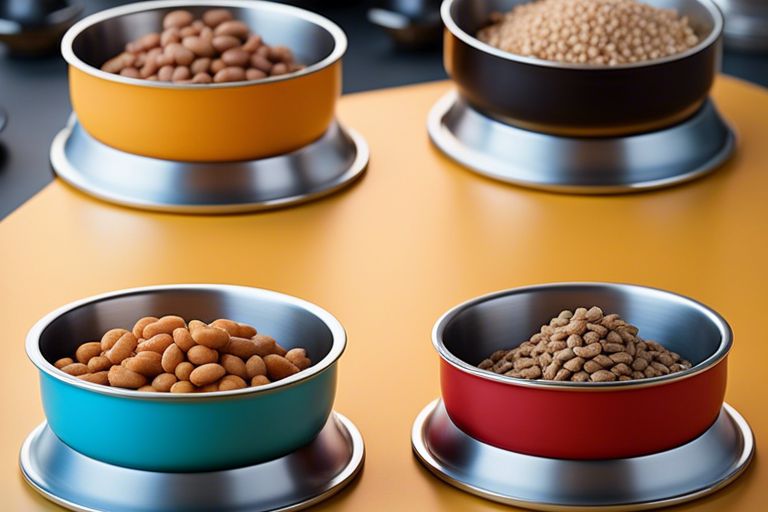
Deciphering Cat Food Labels
Ingredients to Look For
Look for cat foods that list a high-quality animal protein as the first ingredient, such as chicken, turkey, or fish. These proteins are necessary for your cat’s overall health and wellbeing. Additionally, ingredients like whole grains, fruits, and vegetables can provide necessary vitamins and minerals for a well-balanced diet. Omega-3 fatty acids and taurine are also crucial components to look for on the label as they support your cat’s heart health and vision.
Understanding Food Labels and Nutritional Claims
Look for cat foods that are labeled as “complete and balanced” by the Association of American Feed Control Officials (AAFCO). This ensures that the food meets the minimum requirements for your cat’s specific life stage, whether it be kitten, adult, or senior. Pay attention to terms like “natural,” “organic,” and “grain-free,” but remember that these claims don’t always guarantee the quality of the food. Always check the actual ingredients list to ensure you’re providing the best nutrition for your feline friend.
Another important aspect to consider when deciphering cat food labels is understanding the guaranteed analysis section. This section provides information on the minimum percentage of crude protein and fat, as well as the maximum percentage of crude fiber and moisture in the food. It is necessary to compare these values with the nutritional requirements of your cat to ensure they are getting the right balance of nutrients.
Recognizing Ingredients to Avoid
Nutritional experts recommend avoiding cat foods that contain artificial colors, flavors, and preservatives as they offer little to no nutritional value and may even be harmful to your cat’s health. Ingredients like corn, soy, and wheat are common allergens for cats and are often used as fillers in lower quality foods. High amounts of carbohydrates and sugars should also be avoided, as they can lead to obesity and other health issues in cats.
Deciphering food labels and understanding the ingredients in your cat’s food is crucial in ensuring that you are providing them with the best nutrition possible. By being mindful of the ingredients to look for, understanding food labels and nutritional claims, and recognizing ingredients to avoid, you can make informed decisions to support your feline’s dietary needs and overall health.
The Role of Life Stages in Cat Nutrition
Kitten Nutrition: Building Blocks for Growth
To ensure proper growth and development, kittens require a diet that is rich in crucial nutrients. Proteins are crucial for muscle development, while fats provide a concentrated source of energy. Additionally, vitamins and minerals are needed for overall health and immune support. When choosing a kitten food, opt for formulas specifically designed to meet the unique nutritional needs of growing cats.
Adult Cat Nutrition: Maintaining Health and Vitality
Adult cats need a well-balanced diet that supports their everyday activities and overall health. Look for cat foods that provide a mix of proteins, fats, vitamins, and minerals to keep your cat active and healthy. It’s important to monitor your cat’s weight and adjust their food intake accordingly to prevent obesity and related health issues.
With adult cats, it’s crucial to establish a feeding routine and stick to it. This helps maintain their digestive health and prevent overeating. Providing fresh water at all times is also crucial for keeping your cat hydrated and supporting proper kidney function.
Senior Cat Nutrition: Supporting Aging Gracefully
As cats age, their nutritional needs change. Senior cats may require diets that are lower in calories but higher in easily digestible proteins to maintain muscle mass. Additionally, supplements like joint support and omega-3 fatty acids can help manage common age-related issues such as arthritis and cognitive decline.
Supporting your senior cat’s health and well-being also involves regular veterinary check-ups to monitor for any age-related conditions. By selecting a diet tailored to their needs and providing attentive care, you can help your senior feline companion age gracefully and enjoy a high quality of life in their golden years.
Special Dietary Considerations
Now, when it comes to choosing the right cat food for your feline’s dietary needs, there are several special considerations to keep in mind. Whether your cat needs to manage their weight, has allergies, or requires a prescription diet for a medical condition, selecting the appropriate food is crucial for their overall health and well-being.
Managing Weight: Light or Low-Calorie Options
LowCalorie options are available for cats who need to shed some pounds or maintain a healthy weight. These formulas are specially designed to provide all the vital nutrients your cat needs while helping them feel full and satisfied without consuming excess calories.
Hypoallergenic Diets for Cats with Allergies
An hypoallergenic diet is vital for cats with allergies to certain ingredients. These diets typically contain novel protein sources and limited ingredients to reduce the risk of triggering an allergic reaction. If your cat has food sensitivities or allergies, it’s crucial to consult with your veterinarian to determine the best hypoallergenic diet for your feline friend.
It’s important to note that identifying food allergies in cats can be challenging, as symptoms may vary from digestive issues to skin problems. A hypoallergenic diet can help alleviate these symptoms and improve your cat’s quality of life.
Prescription Diets for Medical Conditions
One of the most critical considerations for cats with medical conditions is a prescription diet. These specialized diets are formulated to manage various health issues, such as kidney disease, diabetes, urinary tract problems, and more. Prescription diets are available by recommendation from a veterinarian and play a crucial role in supporting your cat’s health and treatment plan.
With the guidance of your veterinarian, you can select a prescription diet that addresses your cat’s specific medical needs while ensuring they receive the necessary nutrients for their overall well-being.
Exploring Types of Cat Food
All cat owners want the best for their furry companions when it comes to their diet. There are several types of cat food available on the market, each with its own set of pros and cons. Understanding the different options can help you make an informed decision about what to feed your feline friend.
| Dry Cat Food Pros | Dry Cat Food Cons |
| Convenient to feed and store | Low moisture content can lead to dehydration |
| May help maintain dental health | Some cats may not drink enough water to compensate for lack of moisture |
| Cost-effective | Lower in protein compared to wet cat food |
| Can be left out for free feeding | Not as palatable for picky eaters |
| Less messy than wet food | Higher in carbohydrates |
Dry Cat Food: Pros and Cons
To address the pros and cons of dry cat food, it is important to consider factors like convenience, cost, and potential health implications. While dry cat food is easy to store and can promote dental health, the low moisture content may not be suitable for all cats. Additionally, some cats may have a preference for wet food due to its higher protein content and enhanced palatability.
| Wet Cat Food Pros | Wet Cat Food Cons |
| Higher moisture content helps prevent dehydration | Can be messy and sticky |
| Rich in protein for muscle health | More expensive than dry food |
| Improved palatability for picky eaters | Requires refrigeration after opening |
| May aid in weight management | Not as convenient for free feeding |
| Varied textures and flavors for dietary enrichment | Short shelf life once opened |
Wet Cat Food: Pros and Cons
For cat owners considering wet food, it is crucial to weigh the pros and cons carefully. While wet cat food offers higher moisture content and premium protein sources, it may come at a higher cost and require refrigeration. However, the improved palatability and weight management benefits make it a popular choice among many feline enthusiasts.
| Raw and Homemade Diets Benefits | Raw and Homemade Diets Risks |
| Customizable to meet specific dietary needs | Increased risk of bacterial contamination |
| Minimal processing for optimal nutrient retention | Difficult to ensure complete and balanced nutrition |
| Potential for improved digestion and allergy management | Time-consuming and requires meticulous meal planning |
| Fresh, whole ingredients for superior quality | Inconsistent nutrient content in homemade recipes |
| May promote a shinier coat and healthier skin | Cost-prohibitive for some cat owners |
Raw and Homemade Diets: Benefits and Risks
One of the biggest advantages of raw and homemade diets is the ability to tailor your cat’s meals to their specific dietary requirements. By using fresh, whole ingredients, you can potentially enhance their digestion and overall well-being. However, it is crucial to be aware of the risks associated with handling raw food, such as bacterial contamination and the challenge of ensuring complete nutrition in every meal.
Nutritional Supplements and Additives
Many cat owners may wonder if their feline friends need additional nutritional supplements to stay healthy. Understanding when supplements are necessary, the common types available, and how to safely incorporate these into your cat’s diet can help you make informed decisions about their nutritional needs.
When Are Supplements Necessary?
For most healthy cats that are fed a complete and balanced diet, additional supplements are not required. However, there are certain situations where supplements may be beneficial. These include cats with specific health conditions such as joint issues, kidney disease, or skin problems, as well as senior cats who may benefit from extra support for their aging bodies.
Common Supplements and Their Benefits
Their are several common types of supplements that are often recommended for cats. Omega-3 fatty acids can help improve skin and coat health, while glucosamine and chondroitin can support joint function. Probiotics are beneficial for gut health, and multivitamins may be recommended for cats with specific dietary deficiencies.
Supplements should never replace a balanced diet but can be a helpful addition to support your cat’s overall health and well-being. Always consult with your veterinarian before adding any supplements to your cat’s diet to ensure they are safe and appropriate for your pet’s individual needs.
How to Safely Integrate Supplements into Your Cat’s Diet
To safely integrate supplements into your cat’s diet, it’s necessary to follow your veterinarian’s guidance on dosage and frequency. Different supplements have varying recommended amounts, and it’s crucial not to exceed these to prevent any potential adverse effects. Additionally, monitor your cat’s response to the supplements and consult your vet if you notice any changes in their health or behavior.
Plus, always choose high-quality supplements specifically formulated for cats to ensure they are getting the right nutrients in the proper concentrations. By working closely with your veterinarian, you can ensure that any supplements added to your cat’s diet are both safe and beneficial for their overall health.
Feeding Practices and Portion Control
Determining the Right Portion Size
An imperative aspect of feline nutrition is ensuring your cat receives the correct portion size of food to maintain a healthy weight and overall well-being. The appropriate portion size can vary depending on your cat’s age, size, activity level, and any underlying health conditions. It is crucial to consult with your veterinarian to determine the proper portion size for your feline companion.
The Debate Over Free Feeding vs. Scheduled Meals
Control over your cat’s diet is imperative for their health and longevity. The debate between free feeding and scheduled meals revolves around how food is made available to your cat throughout the day. Scheduled meals involve specific feeding times and portion control, allowing you to monitor your cat’s intake. Free feeding, on the other hand, involves leaving food out for your cat to eat at their own pace. Each method has its pros and cons, but it is vital to choose the one that best suits your cat’s dietary needs.
When discussing the debate between free feeding and scheduled meals with your veterinarian, consider your cat’s individual requirements and lifestyle. Some cats do well with scheduled meals to prevent overeating, while others may thrive on free feeding if they have self-control with food.
The Impact of Treats on Diet and Nutrition
Meals that include treats are a common practice among cat owners, but it is imperative to be mindful of the impact these additional snacks can have on your cat’s diet and nutritional balance. Treats should be given in moderation and accounted for in your cat’s daily caloric intake to prevent excessive weight gain or nutrient deficiencies.
The Impact of Treats on Diet and Nutrition
On the other hand, treats can be used strategically as rewards for training or bonding with your cat. Opting for healthy, high-quality treats that complement your cat’s diet can provide mental stimulation and enhance the human-animal bond without compromising their overall nutrition.
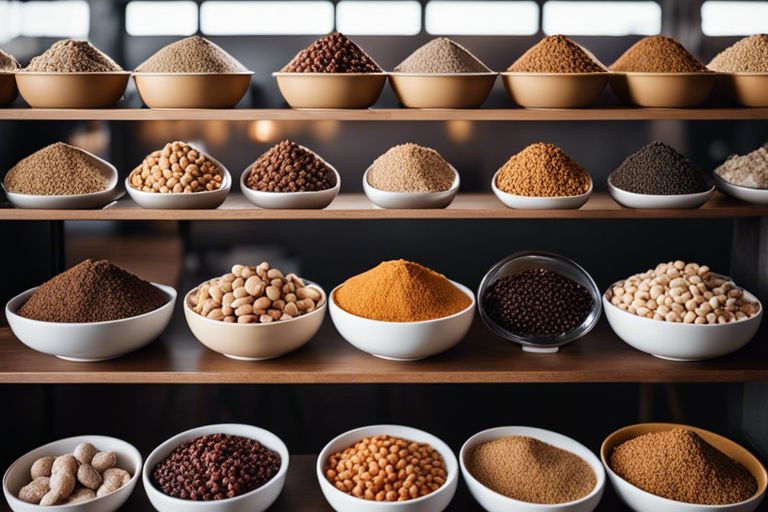
Transitioning to New Cat Food
Reasons for a Diet Change
Not all cats will readily accept a new food, especially if they have been eating the same diet for a long time. However, there are several reasons why you might need to switch your feline friend’s food. It could be due to health issues, age-related dietary requirements, or simply to offer a better quality nutrition.
How to Introduce New Food Successfully
Successfully transitioning your cat to a new food requires patience and a gradual approach. Start by mixing a small amount of the new food with their current food and gradually increase the proportion over a week or more. This slow transition helps prevent digestive upset and allows your cat to adjust to the new taste and texture.
Food preferences can vary from cat to cat, so it’s necessary to observe how your feline friend responds to the new diet. Some cats may take longer to adapt, while others may accept the change more easily. Be attentive to any signs of reluctance or digestive issues during the transition period.
Monitoring Your Cat’s Health During Transition
An necessary part of transitioning your cat to a new food is monitoring their health throughout the process. Keep an eye on their appetite, energy levels, coat condition, and litter box habits. Any significant changes in these areas could indicate that the new food is not agreeing with your cat.
The transition period is crucial for ensuring your cat’s health and well-being. If you notice any concerning symptoms or behaviors, consult your veterinarian for guidance on how to proceed.
Conclusion
Summing up, choosing the right cat food for your feline’s dietary needs is crucial for their overall health and well-being. By understanding your cat’s specific nutritional requirements, you can select a quality cat food that supports their growth, energy levels, and immune system. It is important to consult with a veterinarian to determine the best diet for your cat based on their age, breed, activity level, and any underlying health conditions.
Remember to read the ingredient list on cat food labels carefully, opting for products that list real meat as the first ingredient and avoid fillers and artificial additives. By investing in a high-quality cat food that meets your pet’s nutritional needs, you can help ensure they lead a long and healthy life. Ultimately, choosing the right cat food is a key component of responsible pet ownership.
FAQ
Q: Why is it important to choose the right cat food for your feline’s dietary needs?
A: It is crucial to select the right cat food for your feline as their dietary needs vary based on age, size, breed, and health conditions. Providing proper nutrition is crucial for their overall health and well-being.
Q: What should I consider when choosing the right cat food?
A: When choosing cat food, consider factors such as your cat’s age, activity level, any health issues, ingredients in the food, and whether wet, dry, or a combination of both types of food is suitable for your cat.
Q: What are the differences between wet and dry cat food?
A: Wet cat food has higher moisture content, which can help with hydration and is often more palatable for picky eaters. Dry cat food is convenient, helps with dental health, and can be left out for free-feeding. A combination of both types can provide a well-rounded diet.
Q: Should I consult with a veterinarian before choosing cat food?
A: Yes, it is recommended to consult with a veterinarian to determine your cat’s specific dietary needs. They can help you choose the right cat food based on your cat’s age, weight, health conditions, and any allergies or sensitivities they may have.
Q: How can I transition my cat to a new type of cat food?
A: To transition your cat to a new type of cat food, mix a small amount of the new food with their current food and gradually increase the proportion of the new food over 7-10 days. This slow transition can help prevent digestive upset and ensure your cat adjusts well to the new food.
